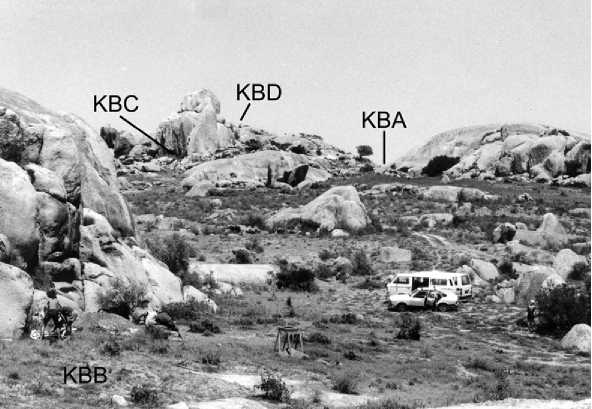The arrival of Iron Age farmers to South Africa brought the widest range of domestic plants and animals. These people have been divided into three groups; (1) the Kwale branch of East African Urewe Tradition;
(2) the Nkope branch of the Urewe Tradition; and
(3) the Kalundu Tradition from the Congo. They brought with them ceramics whose designs can be traced further north. They also brought an African language, known as Ntu, which is part of the Niger-Congo family, and has its roots in the Cross Rivers area of West Africa. They introduced iron technology which was crucial for making tools to clear fields in the slash-and-burn system used, and for weapons. Huffman believes that the layout of the

Figure 2 Excavated sites at Kasteelberg, Vredenburg Peninsular, Western Cape province, South Africa. Taken form Smith AB (2006) Excavations at Kasteelberg and the origins of the Khoekhoen in the Western Cape, South Africa.
Homesteads, which he calls the Central Cattle Pattern, with huts surrounding the cattle kraal, and with burials in the central cattle area, can trace its origins to the earliest arrivals. Not everyone agrees. Lane is skeptical that such a tradition can survive without change for such a long period. Huffman’s system of decorative symbols on ceramics currently has the strongest voice, and adherents would say the system also carries through to the present.




 World History
World History









